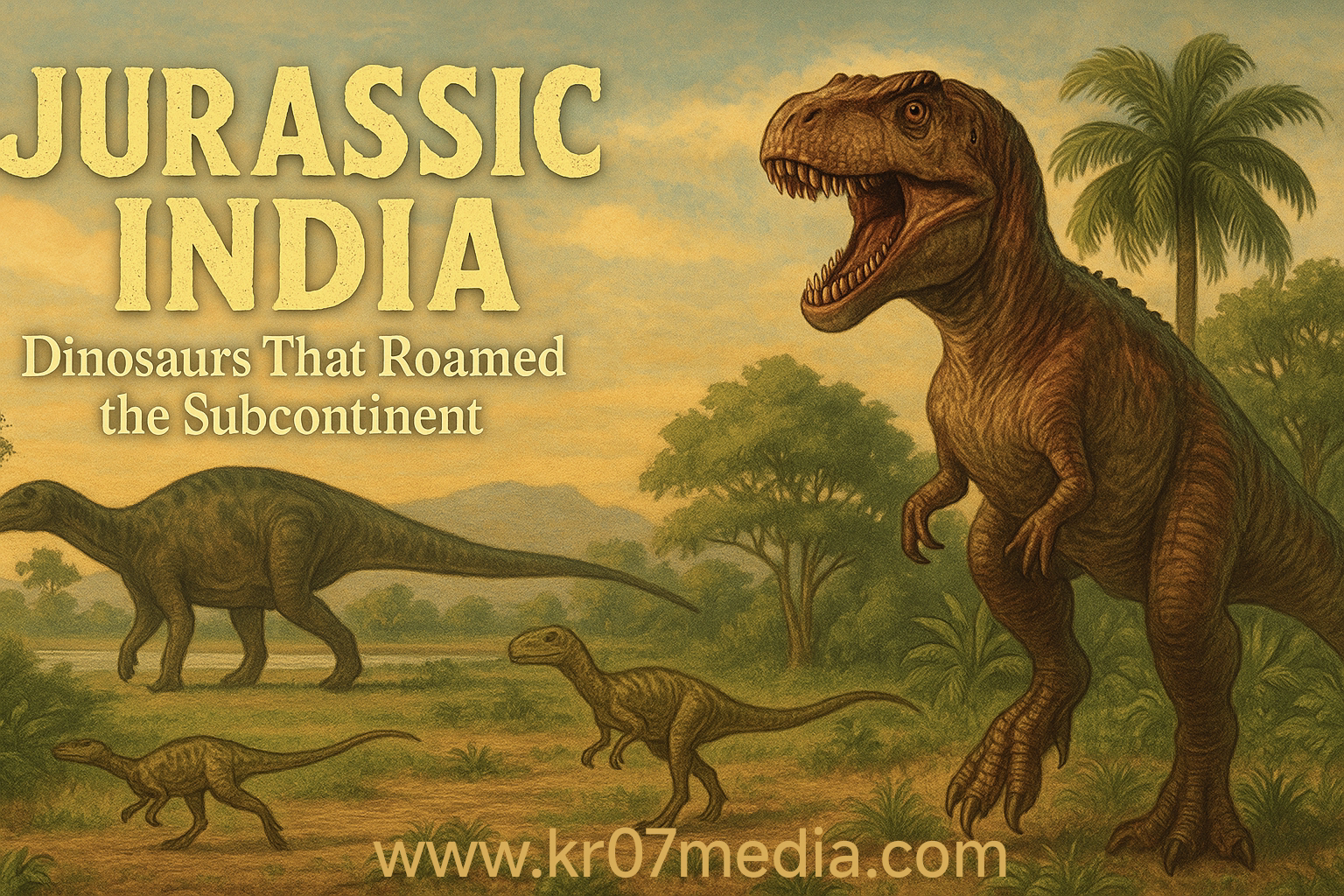India’s prehistoric landscape tells a fascinating story—of towering reptiles that once thundered across lush plains, dense forests, and river valleys millions of years ago. Long before the Himalayas rose and the Indian plate collided with Asia, the subcontinent was home to a vibrant ecosystem teeming with dinosaurs. From ferocious predators to gentle giants, the fossil record of Jurassic India offers a remarkable glimpse into the world of the dinosaurs that once roamed this ancient land.
India’s Place in Prehistoric Geography
To understand the presence of dinosaurs in India, we must first look at the planet's geography during the Mesozoic Era—especially the Jurassic Period, which spanned from about 201 to 145 million years ago. During this time, India was part of the southern supercontinent Gondwana, which included modern-day Africa, South America, Antarctica, and Australia.
This unique positioning meant that India had vast floodplains, rich vegetation, and warm tropical climates—ideal conditions for large reptilian life to thrive. As India drifted northward over millions of years, it left behind layers of sedimentary rock rich in fossils, preserving its Jurassic past.
Major Dinosaur Fossil Sites in India
India is dotted with fossil sites, some of which are globally significant for paleontological discoveries. The most prominent among them include:
Jabalpur (Madhya Pradesh) – One of the earliest dinosaur fossil discovery zones in India.
Narmada Valley (Gujarat and Madhya Pradesh) – Known for both eggs and skeletal remains.
Balasinor (Gujarat) – Often referred to as the "Jurassic Park of India."
Tiruchirappalli (Tamil Nadu) – Hosts marine and terrestrial fossils from the Late Jurassic and Early Cretaceous.
These sites provide evidence that a diverse array of dinosaurs once roamed India, some even unique to the subcontinent.
Notable Dinosaurs of Jurassic and Early Cretaceous India
1. Barapasaurus
Era: Early Jurassic (~185 million years ago)
Type: Herbivorous sauropod
Features: Barapasaurus, meaning "big-legged lizard," was one of the earliest long-necked dinosaurs to be discovered in India. It measured about 12–14 meters in length and had massive limbs suited to supporting its gigantic body.
Found in: Andhra Pradesh
2. Kotasaurus
Era: Early Jurassic
Type: Herbivore
Significance: One of the most primitive sauropods found in India, Kotasaurus represents an early stage in sauropod evolution. It lived in what is today the Godavari Valley region.
3. Rajasaurus
Era: Late Cretaceous (~70 million years ago)
Type: Carnivorous theropod
Significance: Though technically not from the Jurassic, Rajasaurus is too iconic to ignore. It was a fearsome predator with a distinctive horn on its head. Its name means "royal lizard."
4. Indosaurus
Era: Late Cretaceous
Type: Carnivorous theropod
Features: Indosaurus was a large meat-eating dinosaur with strong jaws and sharp teeth. Fossils suggest it may have been related to the abelisaur family, known for their stout skulls and reduced forelimbs.
5. Titanosaurs (Various Species)
Era: Late Cretaceous
Features: India was home to several species of titanosaurs—enormous, long-necked herbivores. These dinosaurs are known from fossilized bones and egg clutches, especially in Balasinor.
India’s Dinosaur Eggs and Nesting Grounds
One of the most astonishing paleontological finds in India comes not from bones but from eggs. In Gujarat’s Balasinor, vast nesting sites containing hundreds of fossilized dinosaur eggs have been discovered. These sites suggest that some Indian dinosaurs nested in colonies, much like modern birds.
In fact, India holds one of the largest dinosaur hatchery sites in the world, with discoveries indicating nesting behavior over generations in the same spots.
Why Jurassic India Matters Globally
Unique Evolutionary Lineages: Indian dinosaurs, particularly during the time when the continent was drifting alone across the Tethys Ocean, evolved in relative isolation. This led to the emergence of species not found elsewhere.
Gondwanan Connections: Indian fossils help scientists link dinosaur species found in Africa, Madagascar, and South America—shedding light on continental drift and evolutionary patterns.
Rich Fossil Layers: The diverse sedimentary rock formations across the country offer clues not just about dinosaurs, but about the entire prehistoric ecosystem—plants, fish, and invertebrates.
Preserving India’s Prehistoric Heritage
While India has made major contributions to dinosaur research, many fossil sites remain under-explored or under threat due to urbanization, mining, and lack of awareness. Efforts are underway to develop fossil parks, such as the Dinosaur Fossil Park in Raiyoli (Gujarat) and Ghughua Fossil National Park (Madhya Pradesh), to preserve and promote this invaluable heritage.
Educational outreach, tourism, and responsible fossil conservation could turn India into a global hub for dinosaur research in the coming decades.
Conclusion
India's prehistoric past is a hidden treasure chest filled with the bones, eggs, and stories of creatures that once ruled the Earth. From towering herbivores like Barapasaurus to terrifying predators like Rajasaurus, the subcontinent's fossil record adds a rich chapter to the global tale of dinosaurs. As more discoveries emerge, Jurassic India will continue to capture the imagination of scientists and dinosaur enthusiasts alike—proving that even in ancient times, India was truly a land of giants.
Did you know? In Balasinor, Gujarat, you can actually walk on fossilized dinosaur nesting grounds and see eggs up close—making it one of the rare places in the world where this is possible!



